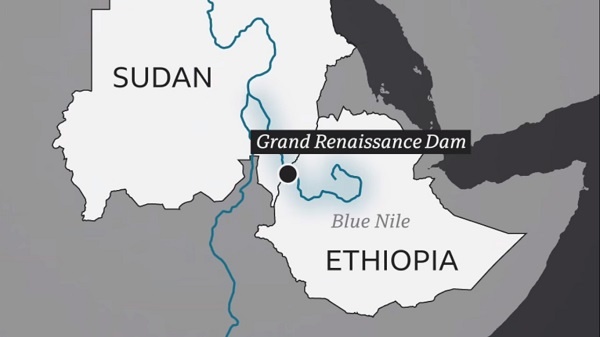
(BBC News) – Sudan and Egypt have hit out at Ethiopia, which has started filling a reservoir behind a controversial new dam on the Blue Nile.
Satellite images show water backing up on the Grand Ethiopian Renaissance Dam and now Sudan has reported reduced water flow in its section of the Nile River. Both Sudan and Egypt are downstream and are worried the dam will reduce their access to water.
A deal between Ethiopia, Egypt and Sudan over the reservoir is proving elusive.
Instead there’s a fraught stand-off with national pride, regional power and economic development at stake.
In the latest of his weekly reports, this is Ros Atkins on why Egypt and Ethiopia can’t agree on the Nile dam.
About the Grand Ethiopian Renaissance Dam (GERD)
The Grand Ethiopian Renaissance Dam (GERD), formerly known as the Millennium Dam, is under construction in the Benishangul-Gumuz region of Ethiopia, on the Blue Nile River tributary (from where 85% of the Nile’s waters flow), which is located about 40km east of Sudan. The project is owned by Ethiopian Electric Power Corporation (EEPCO).
Construction of GERD started in April 2011 after the 80 billion birr (~4.7 billion USD) engineering, procurement and construction contract was awarded to Salini Costruttori SpA, an Italian major construction company. When completed, GERD will be Africa’s biggest hydroelectric power plant.
GERD has been a source of tension in the Nile River basin ever since Ethiopia broke ground on it in 2011, with downstream countries Egypt and Sudan worried it will restrict vital water supplies.
Addis Ababa has long intended to begin filling the dam’s reservoir this month, in the middle of its rainy season, though it has not said exactly when.
Cairo and Khartoum are pushing for the three countries first to reach an agreement on how it will be operated.
Source: BBC News
